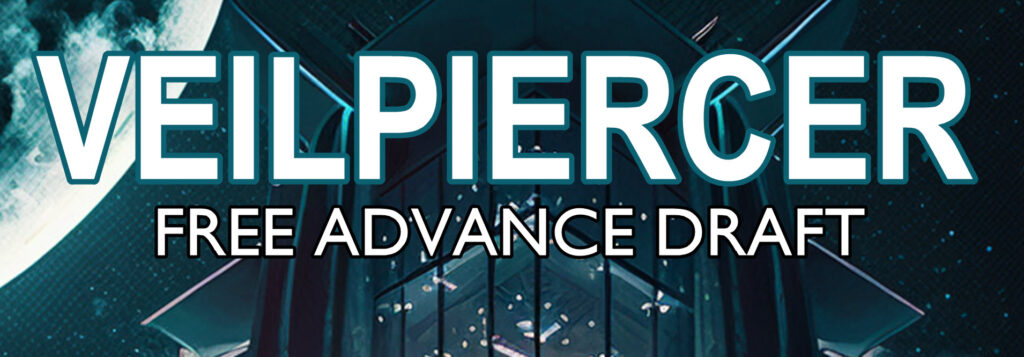The reality behind Veilpiercer’s supervillain

I’m surprised by feedback about a character in Veilpiercer.
Lexi Xenos is the CEO of the fictional giant tech company Arrgle, and she’s just awful. She’s obsessed with privilege. She’s rich beyond imagining and unashamed about using her wealth for selfish indulgence. She manipulates and belittles people, a high-tech version of Meryl Streep in Devil Wears Prada. She’s pretty deeply into Bond supervillain territory. Several people have told me that she’s over the top and one-dimensional.
I’m unsure how to respond because almost everything I describe is stitched together from real life examples.
Lexi is a billionaire. Seven of the world’s ten biggest companies have a billionaire as their CEO or main shareholder, according to a report released by Oxfam last week. They’re getting richer fast. The five richest individuals in the world have more than doubled their wealth since 2020.
The first time you meet Lexi, she’s entering a private terminal at SFO reserved for the super-wealthy. She doesn’t have to go through security or walk through crowds with normal people. When the time comes to board her jet, she’s driven out to it in a luxury car.
There’s nothing new about private jets for the rich, of course, taking off from small airports. But I placed the Buffett Terminal adjacent to SFO.

Here’s an article about the private terminal for the wealthy at LAX in Los Angeles that opened in 2017. “The $22 million facility is located on the far side of the airport, away from public terminals and paparazzi. There are 13 suites with bathrooms, drinks, food, televisions, and a staff of eight servants—er, attendants.” There’s an art gallery, a park onsite with tents and a faux fireplace, pre-flight massages, in-suite manicures, haircuts, and a kid’s area to play on real grass. When a flight is ready for boarding, travelers are driven the 70 steps to the plane in a luxury car.
There are similar terminals in London, Dubai, Munich, and a few other cities.
The private terminals have an annual membership fee of ten thousand dollars, more or less, plus a fee of a few thousand dollars each time you use them for a flight.
There’s no terminal like that at SFO. As far as I know.
In the story, Lexi has built a gaudy house, practically a castle, north of San Rafael on land that currently is protected from development. She acquired the land and got approvals for construction by manipulating the political process and using cutout companies.
Do you really need examples?
Wired Magazine recently did the first extensive coverage of Mark Zuckerberg’s $100 million construction project on Kauai – one of the largest private construction projects in human history and likely to be the most valuable residential property in the world when completed. There will be two mansions totaling 50,000 square feet and a 5,000 square foot underground shelter for escaping from global meltdowns, built to bomb shelter specifications. The project is being handled with maximal secrecy; “according to evidence reviewed by WIRED, the project has relied on legal maneuvering and political networking, and at times, sources believe, it has shown disregard for the local public.”
Maybe you’ve visited Hearst Castle, which consolidated parcels from Spanish land grants and indigenous land in San Simeon, California, into an 82,000 acre estate with lavish art collections.
If you’re on the east coast, you might know the Biltmore Estate in Asheville, North Carolina, an 80,000 acre property assembled by George Vanderbilt from land owned by small farmers and local homesteaders. It’s the largest privately-owned home in the US. For now.
One of Lexi’s quirks is her need to have an escape route if things fall apart. She owns a huge estate in New Zealand, kept ready in case of a societal collapse.
Survivalism is an obsession for many modern billionaires. Douglas Rushkoff describes a meeting with several billionaires that he expected would be devoted to how their businesses affect the world. Instead, he found himself dealing with questions about the apocalypse.
“Eventually, they edged into their real topic of concern: New Zealand or Alaska? Which region would be less affected by the coming climate crisis? It only got worse from there. Which was the greater threat: global warming or biological warfare? How long should one plan to be able to survive with no outside help? Should a shelter have its own air supply? What was the likelihood of groundwater contamination? Finally, the CEO of a brokerage house explained that he had nearly completed building his own underground bunker system, and asked: “How do I maintain authority over my security force after the event?” The event. That was their euphemism for the environmental collapse, social unrest, nuclear explosion, solar storm, unstoppable virus, or malicious computer hack that takes everything down.”
New Zealand is the bolthole of choice for Silicon Valley tech billionaires like Peter Thiel. If you’re interested, Rushkoff’s book Survival of the Richest: Escape Fantasies of the Tech Billionaires is eye-opening.
Lexi has a private art collection, unavailable for public viewing. Of course, art has long been an obsession of the wealthy, and there are many, many pieces of historically important art held in private collections. David Geffen’s collection is estimated to be worth more than two billion dollars. Hedge fund manager Steven Cohen has more than a billion dollars of fine art. There are other billion dollar collections and many valued in the hundreds of millions. Many billionaires loan a few pieces to museums occasionally but let’s face it, part of the excitement for the wealthy collectors is the knowledge that no one else can see this painting or that sculpture. Picture Bill Gates rubbing his hands over his $30 million Leonardo Da Vinci codex and saying, “My precious, my precious.” I don’t think he does that but it’s the right idea.
Salvator Mundi is a painting attributed to Leonardo Da Vinci. In 2017 it was sold for $450 million, at that time the most expensive painting ever sold at public auction. It disappeared from view. It has not been publicly exhibited since the sale and even the identity of the buyer was unknown for some time. Its location was a mystery for more than two years until a leak revealed that it was hanging in a yacht owned by a Saudi prince. Now it’s in a secret location – supposedly to be displayed someday in a museum, maybe, sure.
Is Lexi’s collection so unlikely? It’s modest compared to the truly wealthy collectors.
Lexi’s private art collection is in her lavish estate in Jackson, Wyoming. Her neighbors might be Harrison Ford at his 5,000 acre ranch, or Sandra Bullock visiting her 6,700 acre ranch, or Jeff Bezos, whose 165,000 acre ranch a few miles away makes him the largest private landowner in the state.
Lexi has a special interest in nearly-extinct animal species. She hunts them. She’s proud of it.
Supervillain? You bet. So are the large number of wealthy hunters who travel all over the world to hunt nearly extinct species. It makes them excited. Start with the New York Post article, “Elephants, lions and leopards: 13 countries where rich people hunt endangered animals.” Lexi is not only not alone, she’s not even very original in her hobbies.
There’s a scene in Veilpiercer where Lexi makes an unnecessary trip to her company’s space station because costly frivolous adventures turn her on. You know that Jeff Bezos and Richard Branson did that, right?
Lexi receives expensive anti-aging medical treatment at a specialized clinic in Switzerland. One of the central dilemmas of medical care in the 21st century is how to deal with very expensive treatments and pharmaceuticals. CAR-T cell therapy might be effective for certain types of cancer but the cost can reach $500,000 per treatment. There are new forms of proton therapy and gene therapy that can cost hundreds of thousands or even millions of dollars per treatment. Maybe society will evolve some way to deliver those treatments equitably but at the moment they are only available to people like Lexi Xenos.
I like Lexi Xenos. She worked hard, relentlessly, to get to her position as leader of the most powerful company in the world in 2050. Is she evil? Sure, maybe. But her big problem is lack of empathy and being blind to the problems of wealth and inequity, and there are all too many people like that living around us today.
Shine a light on today’s billionaires. You’ll find supervillains by almost any definition. Somebody ought to write a book about that.

Last chance to request a free advance draft of Veilpiercer! Offer ends January 30, 2024. Click here for details!
